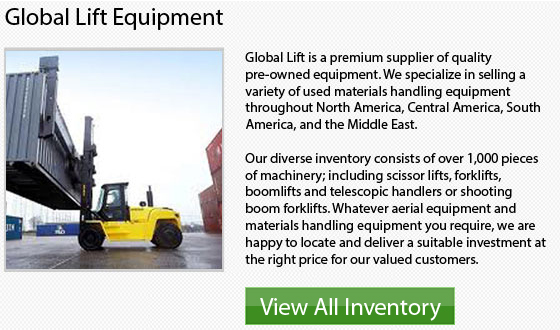
Ever since its introduction in the early 1920s, the lift truck has become an invaluable piece of equipment found in many industrial operations and warehousing. Clark, among the pioneers of the first forklift, has grown to become a leader in the material handling industry and still remains a top supplier. Other popular names in the making of these machines include: Toyota, Mitsubishi, Cat, Hyster, Nissan and Yale.
The Hyster type of forklift has become one of the industries most popular manufacturers. The fact is, in some places, the word "Hyster" is synonymous with forklift. Other common names for this industrial lifting machines consist of: fork truck, stacker truck, high/low, lift truck and jitney.
The ancestor of today's machines was initially developed in the early part of the 19th century. At this time, battery-powered, small models were made for the purpose of transporting traveler's luggage at the Altoona train station in Pennsylvania. In the First World War, various versions were made within England particularly for use in the material handling business. These equipment evolved as a solution to the manpower shortage at that time.
The modern equivalents come in a variety of configurations and sizes. There are the large truck-mounted forklift models that are also known as sod loaders and then the opposite end of the spectrum has small hand truck units. There are also a line of automated versions referred to as forklift automated guided vehicles which are practically robotic in nature. These units were developed as a means of lowering operational costs and to improve productivity.
A regular lift truck is able to utilize a wide array of attachments that are capable of being added for a variety of particular functions. The motors can be IC or internal combustion units, running on diesel, gasoline or propane, or there are battery operated options that need regular charging. Standard warehouse units would usually be rated to lift between roughly 1 and 5 tons.
Ever since their evolution, lift trucks have become a priceless part of the material handling business. Many of these units are utilized each and every day all around the globe to perform tasks which used to need a lot more man-power. Operators have to take stringent training programs so as to operate these heavy equipment legally and safely. Many employees have longer careers now and better health overall due to their not having to raise items by hand anymore as the forklifts could handle those situations now instead.